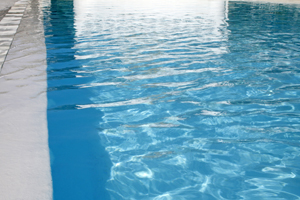Aquatic physical therapy and aquatic exercise are similar in that both let you feel that freeing, near-weightless effect of being in a body of water, but they do differ in the benefits they can offer.
Aquatic physical therapy requires the “skilled service” of a licensed Physical Therapist and/or a Physical Therapy Assistant which may include clinical reasoning and decision-making skills, helping to minimize or eliminate patient impairments, maximizing the functional goals of the patient, and implementing therapy in compliance with all standards of care.
By contrast, Aquatic Exercise is simply utilizing the water for improving quality of life through fitness-related or general health-related goals, and can be done individually or in a group, doesn’t need to be instructed by licensed practitioner, and requires little or no paperwork, insurance involvement, or written follow-up.
The benefits of aquatic physical therapy are exponential. Water can be used to assist movement, support movement, or resist movement in the following ways:
Assisting movement:
- Lessens the load on concentric and eccentric contractions
- Decreases the amount of energy required for movement
- Allow joints to rotate more freely
- Helps use the motion of the water to maintain momentum
Supporting movement:
- Assist with upright positioning, in immersion
- Provides dynamic healing in vertical, painfree movements, increasing blood flow
- Provides less fear of injury or damag
- Allows for greater stretching with relaxation
Resisting movement:
- Uses the inertia of water with movement allows for the challenge of changing direction of movement or stopping movement
- Provides resistance that is infinitely variable
People of any age who would benefit from gentle stretching or who have a weight-bearing restriction would greatly benefit from this kind of therapy. Examples include: arthritis, orthopedic injuries, neuro/stroke/SCI, heart conditions, prenatal care, diabetes, MS, MD, Autism, developmental delays, fibromyalgia.
The following are some aquatic physical therapy methods that focus on specific outcomes:
- Ai Chi: For relaxation, like Tai Chi for the water
- BackHab: For reducing stress through the back joints in an integrated walking program to increase muscle usage with ambulation
- Bad Ragaz: For muscle re-education
- Burdenko: For athletes and musculoskeletal issues
- Halliwick: For those with disabilities learning how to swim
- PNF: For neurological symptoms.
- Pilates: For strengthening the core muscles
- Watsu: For massaging mobilizations.
- Aqua-Stretch: In warm water, for assisted stretching
The duration of aquatic physical therapy depends on the condition, but times per week in the water can range from 1-7. The typical treatment is 2-3 times per week. The newest practice is trying to get post-operative patients into the pool as soon as possible to maximize therapeutic opportunities hopefully improving outcomes.
Amy has been providing physical therapy services in the aquatic environment through St. Cloud Orthopedics since 2004 at the fully equipped YMCA facility in St. Cloud. An aquatic therapy appointment can be scheduled by calling St. Cloud Orthopedics. An in-clinic evaluation with Amy or another physical therapist is required prior to starting in the pool .
 Amy Walsh, MPT, ATRC, is a Certified Aquatic Therapist. She received her masters in physical therapy from the College of Saint Catherine in 2000, and completed her transitional doctorate in physical therapy from the College of St. Scholastica in 2010. She has been with St. Cloud Orthopedics since 2001. Amy has two wonderful high-school-aged daughters.
Amy Walsh, MPT, ATRC, is a Certified Aquatic Therapist. She received her masters in physical therapy from the College of Saint Catherine in 2000, and completed her transitional doctorate in physical therapy from the College of St. Scholastica in 2010. She has been with St. Cloud Orthopedics since 2001. Amy has two wonderful high-school-aged daughters.

